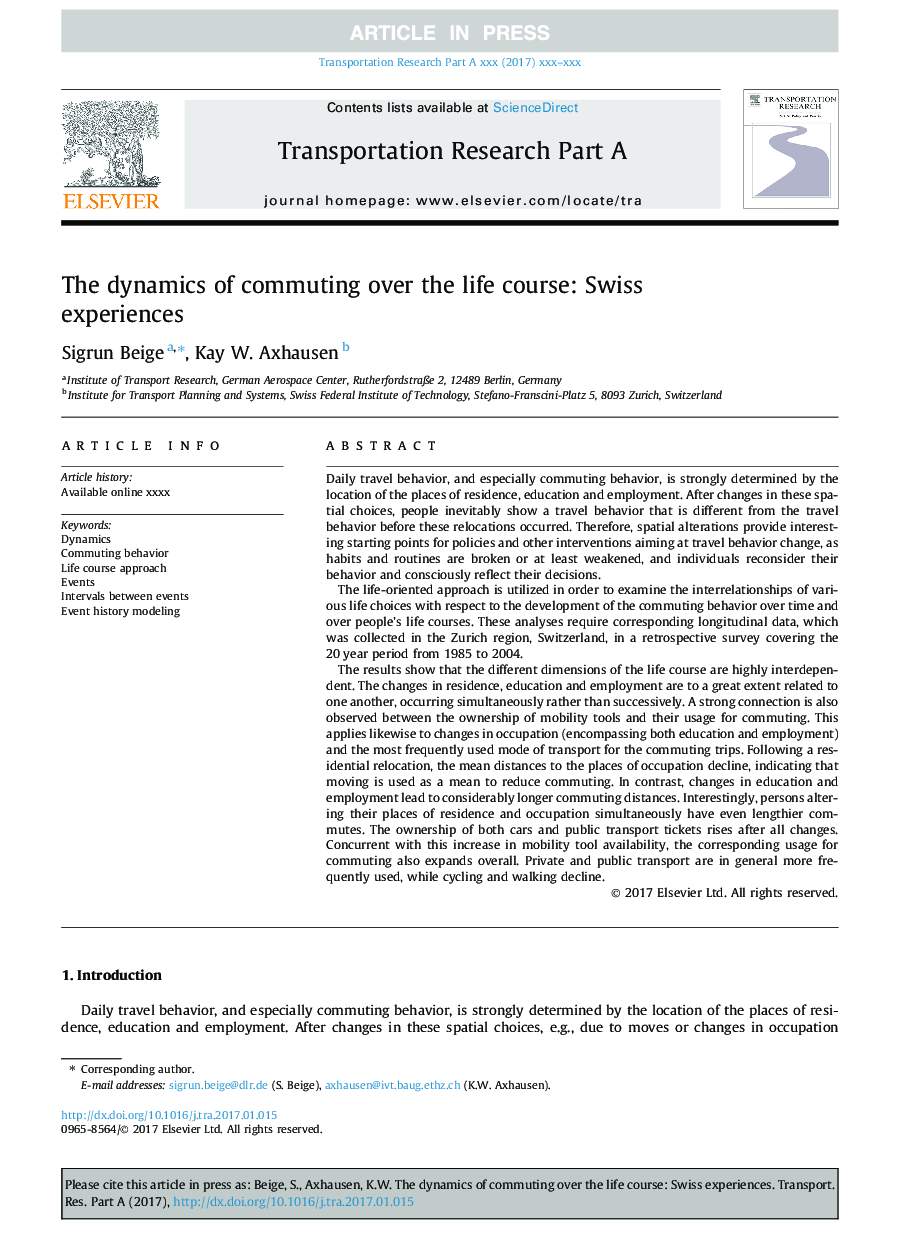| Article ID | Journal | Published Year | Pages | File Type |
|---|---|---|---|---|
| 4928875 | Transportation Research Part A: Policy and Practice | 2017 | 16 Pages |
Abstract
The results show that the different dimensions of the life course are highly interdependent. The changes in residence, education and employment are to a great extent related to one another, occurring simultaneously rather than successively. A strong connection is also observed between the ownership of mobility tools and their usage for commuting. This applies likewise to changes in occupation (encompassing both education and employment) and the most frequently used mode of transport for the commuting trips. Following a residential relocation, the mean distances to the places of occupation decline, indicating that moving is used as a mean to reduce commuting. In contrast, changes in education and employment lead to considerably longer commuting distances. Interestingly, persons altering their places of residence and occupation simultaneously have even lengthier commutes. The ownership of both cars and public transport tickets rises after all changes. Concurrent with this increase in mobility tool availability, the corresponding usage for commuting also expands overall. Private and public transport are in general more frequently used, while cycling and walking decline.
Keywords
Related Topics
Physical Sciences and Engineering
Engineering
Civil and Structural Engineering
Authors
Sigrun Beige, Kay W. Axhausen,
